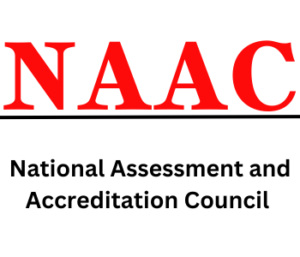Introduction
Benefits of NAAC Accreditation : The National Assessment and Accreditation Council (NAAC) accreditation is a prestigious recognition that signifies an institution’s commitment to quality and excellence in higher education. This post aims to explore the various benefits that institutions gain from obtaining NAAC accreditation. Additionally, we will address frequently asked questions (FAQs) to provide a comprehensive understanding of this transformative process.
Understanding NAAC Accreditation

NAAC accreditation is a voluntary process wherein higher education institutions undergo a rigorous evaluation to assess their overall performance and adherence to quality standards. It involves a thorough examination of academic, administrative, and governance aspects of the institution.
Advantages of NAAC Accreditation
Enhanced Credibility and Reputation
NAAC accreditation adds to an institution’s credibility and reputation, both nationally and internationally. It assures stakeholders of the institution’s commitment to providing quality education and infrastructure.
Continuous Improvement
The accreditation process encourages institutions to adopt a culture of continuous improvement. By analyzing their strengths and weaknesses, institutions can identify areas for enhancement and strive for excellence.
Funding Opportunities
NAAC-accredited institutions are often preferred by funding agencies and governments for financial support. Accreditation opens doors to various funding opportunities for research, infrastructure development, and academic programs.
Collaborations and Partnerships
Accredited institutions are more likely to attract collaborations and partnerships with other reputed organizations and universities. These partnerships offer opportunities for faculty exchange, joint research projects, and knowledge sharing.
Global Recognition
NAAC accreditation enhances an institution’s global recognition and increases its competitiveness on the international stage. It attracts foreign students and faculty, contributing to a diverse and enriched learning environment.
Student and Stakeholder Confidence
Accreditation instills confidence in students and their parents, assuring them of the institution’s quality education and overall development. It also boosts confidence among stakeholders, including employers and industry partners.
FAQs on Benefits of NAAC Accreditation
FAQ 1: What is NAAC accreditation, and why is it essential for institutions?
NAAC accreditation is a quality assurance process that evaluates an institution’s performance in various aspects. It is essential as it validates an institution’s commitment to delivering quality education and infrastructure.
FAQ 2: How does NAAC accreditation contribute to an institution’s credibility?
NAAC accreditation enhances an institution’s credibility by providing a reliable assessment of its academic and administrative practices, promoting trust among stakeholders.
FAQ 3: Can NAAC accreditation lead to academic and administrative improvements?
Yes, NAAC accreditation encourages institutions to identify areas of improvement and implement measures for academic and administrative enhancements.
FAQ 4: Are accredited institutions more likely to receive funding support?
Yes, accredited institutions are more likely to attract funding support from government agencies, funding bodies, and donors due to their recognized quality standards.
FAQ 5: How does NAAC accreditation facilitate collaborations and partnerships?
NAAC-accredited institutions are perceived as reliable and competent partners, making them attractive for collaborations and partnerships with other academic institutions and organizations.
FAQ 6: Does NAAC accreditation enhance an institution’s global reputation?
Yes, NAAC accreditation enhances an institution’s global reputation by indicating its commitment to quality education and adherence to international standards.
FAQ 7: How does NAAC accreditation inspire student and stakeholder confidence?
NAAC accreditation assures students and stakeholders of an institution’s commitment to providing high-quality education and overall development opportunities.
FAQ 8: Can non-accredited institutions apply for NAAC accreditation?
Yes, both accredited and non-accredited institutions can apply for NAAC accreditation based on their eligibility and willingness to undergo the evaluation process.
FAQ 9: How long does the NAAC accreditation process typically take?
The NAAC accreditation process typically takes several months to complete, depending on the institution’s size and complexity.
FAQ 10: What are the key criteria assessed during the accreditation process?
The accreditation process evaluates criteria such as curricular aspects, teaching-learning practices, research and innovations, infrastructure, governance, and student support services.
Conclusion
NAAC accreditation is a transformative journey for educational institutions, providing numerous benefits that contribute to their growth and recognition. By fostering a culture of continuous improvement, NAAC empowers institutions to excel and prepare students for a bright and promising future in the global arena. The process not only enhances an institution’s reputation but also inspires confidence among students, stakeholders, and the entire academic community. Accredited institutions become beacons of excellence, leading the way in delivering quality education and driving positive change in the education landscape.
